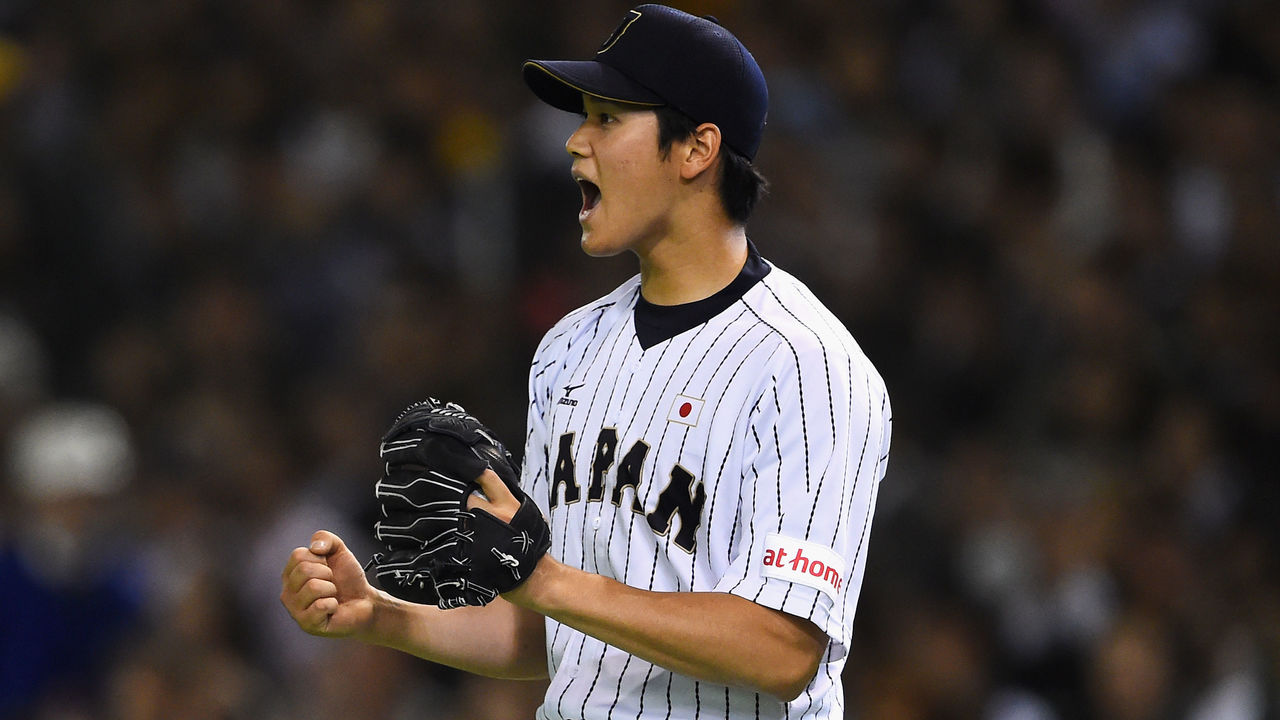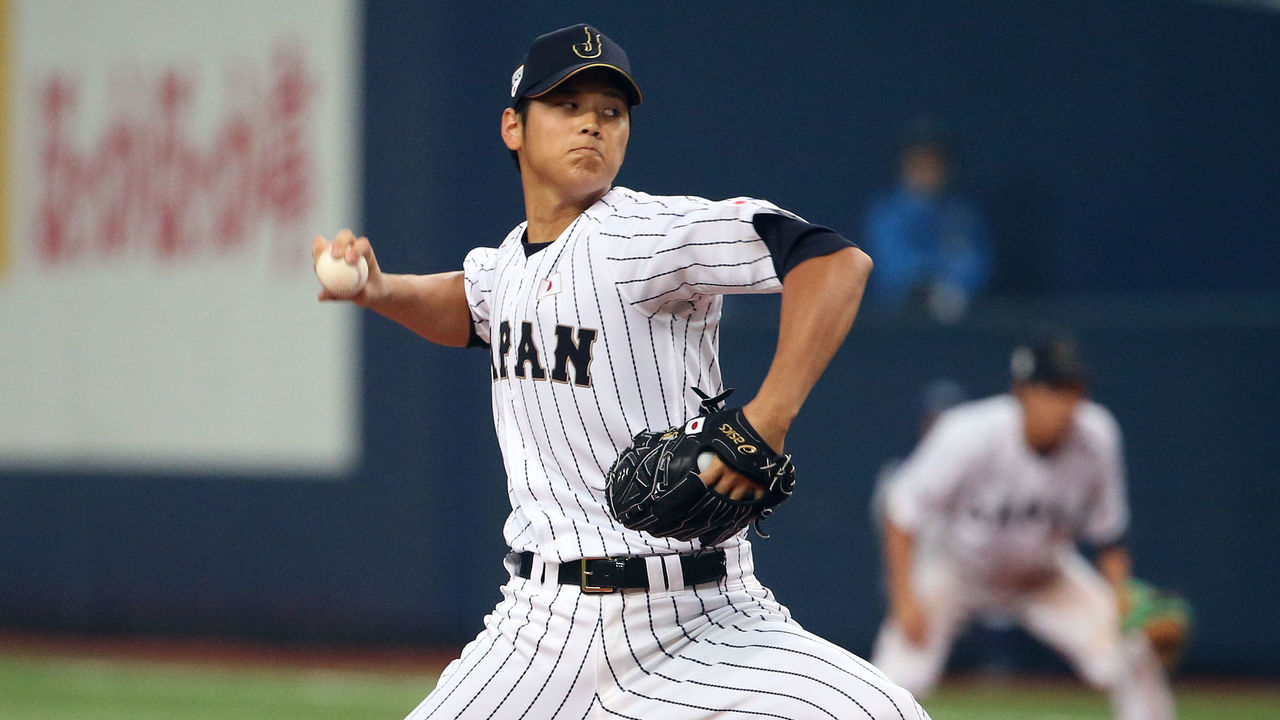Jayson Stark shares his thoughts on Shohei Ohtani
Jayson Stark is a former ESPN.com national baseball columnist who has covered the sport for nearly 40 years. He spoke with theScore on Friday about Japanese two-way sensation Shohei Ohtani, who will be signing with a major-league team this month.
Brandon Wile: Is there a current major leaguer that you could compare his skills to as both a pitcher and position player?
Jayson Stark: I've been asking people who they would compare him too and somebody said 'maybe if Bo Jackson pitched, that is what this would be like.' Now, he's not built like Bo, but you get the idea. As a hitter, I wrote down his stats from Japan and tried to find the hitters who most resembled those. The numbers alone are a cross between Carlos Correa, Mookie Betts, and Freddie Freeman. He's a different player than Ichiro, but their numbers for their age-21 season were comparable. Ohtani has a prettier swing and more power, but Ichiro as a 21- and 22-year-old, was already predicting what he's likely to be, and you can say the same about Ohtani. If you look at the whole list of modern players with a similar career slash line, it's all All-Stars, MVPs, Hall of Famers, near-Hall of Famers. Someone described to me as him having a Shawn Green-type swing.
As a pitcher, his numbers would make him a cross between Clayton Kershaw, Stephen Strasburg, and a bunch of closers. In terms of stuff, I think people would compare him to Yu Darvish - with the expectation that he's going to be better. Wherever the Darvish bar is set, Ohtani's going to be higher than that. Is anything beyond his capability? We've never seen anything like this.

Wile: Do you think there's a part of his game that has been underreported?
Stark: People don't talk about how fast he is - what a great runner he is. There's video of him going from home to first in 3.80 seconds. Almost nobody in the big leagues goes home to first that fast. Billy Hamilton, every once in a while will do that. If we're comparing someone to Hamilton, then you've got some wheels. The scouting scale runs 20-80, and Ohtani is a 70-80 runner. There aren't many of them in the big leagues. Whoever you think is on the list of fastest players in the game, that's where he goes the second he steps on the field here. All we talk about is that he can throw a ball 100 mph, hit a ball 500 feet. He's going to be one of the five fastest players in baseball. This is an incredible human being, with incredible talents.
Wile: There's been plenty of good things said about Ohtani, but is there anything that concerns you about him?
Stark: Health. He had almost a lost season this year because of the ankle and hamstring injuries. Players who have those kinds of injuries at this young of age, it's a concern, especially considering the wear and tear on him and what he's attempting to do. The off-field challenges: media attention, cultural adjustments, representing his country. Also, the sheer difficulty of trying to do something that has never been done. There's nobody he can even go to for advice on how to do this. He's so unique. I'm not saying there's not concerns, but I don't get the sense that there's major concerns.
Wile: How do you think Ohtani will be used in his first season?
Stark: Obviously some of this depends on who he signs with - which league he signs with. He's not going to DH in the National League, and he has made it clear that he doesn't just want to hit, he doesn't just want to pitch. He wants to do both. Since this is a recruitment, not a bidding war, you're not even going to be in the game (to sign him) if you don't tell him 'we think you can do both.' I think it's clear that American League teams have an advantage, because they can allow him to DH. National League teams are going to have to be a lot more creative about it, but there's enough interest across the sport that I don't think anyone should assume anything. He is going to do both. It is very important to him, and if it's important to him, then you got to let him go for it.

Wile: How will Ohtani's success be measured in his first full season?
Stark: That's probably the hardest question to answer. If you asked 30 teams where will this guy be in three years they'd say MVP, or MVP candidate. In the first year, I think the bar has to be lower. Just surveying people what they think is possible: 15-18 home runs and No. 3 level starter. It's hard to attach numbers to it, but if we're talking about a guy who is your No. 3 starter and he hits 18 home runs, then he would be on my MVP ballot next year. I don't think he will be the best pitcher in baseball, best hitter in baseball in year one, but when you add together what he's likely to be if he stays healthy, then you're talking about a star player, a winning player, a guy who is worth all of the money and all of the hoopla.
Wile: Why do you think Ohtani can be successful at being a two-way player when so many others have struggled?
Stark: No one knows for sure if he can be. Really, no one has done what he's attempting to do since Babe Ruth's last year as a pitcher which was 100 years ago. There is a reason for that, but if you're going to say why can this guy do it when no one else could do it, there are a couple of reasons for it.
One: He's already did it in Japan at a high level. We're not talking about a guy who did it in Little League or in high school. We're not even talking about a guy who did it in college. He's done it in one of the greatest baseball leagues in the world. He already has proved that he has the talent to do it and can handle doing it, and likes doing it.
Second thing: He is determined to do it. From the time he was a kid to when he was coming into Japanese Professional Baseball, everyone was telling him 'you can't do this.' He refused to accept that, and because the Nippon-Ham Fighters allowed him to do both, that's why they wound up with him. That's why this whole thing has unfolded the way it has. Somebody said to me that he has a vision of himself and this is his vision. He is confident that he can do both, so that's a big part of it.
Third thing: Look at the way baseball has evolved. Look at the thinking in front offices and in the dugout these days. Teams are no longer answering every question with 'that's the way we've always done it.' The thinking now is so innovative, and the willingness to try things that have never been tried has never been higher. The creativity level has never been higher. What's one of the biggest trends we've seen in the game? It's the multi-position player. Look at the Cubs and how they move people across the field - Kris Bryant, Javy Baez, Ben Zobrist. That flexibility is a big way of how teams think now. What's the right time, the right moment, for someone to achieve what he's trying to achieve? This feels like the right time for all those reasons.

Wile: What is the biggest learning curve for Japanese players coming to North America?
Stark: I think it's more off the field than on the field. There is a learning curve on the field - especially for a player who is 23 years old, hasn't played a lot of professional baseball and hasn't seen major-league pitching staffs. There's going to be on-field adjustments, but Ichirio and Hideki Matsui came over and they didn't have a lot of problems on the field. Off the field, it's always a bigger challenge. The responsibility of representing your nation is immense, and with that responsibility comes a degree of attention that maybe he's been used to. No matter where he goes, he's not going to be able to hide. There will always be two dozen members of the Japanese media following him around at the minimum. Teams are going to do things to help this guy succeed and adjust that I'm going to guess have never been done for another player, but that doesn't mean it's not a challenge to make those adjustments.
Wile: If Ohtani is successful, do you see more teams experimenting with two-way players?
Stark: That's a really tricky question because we're talking about a unique talent. I do think that unique is the word for him, and unique in a lot of ways is the word for what he's trying to do. But let's say he does do it. Obviously, when one guy does something, it makes everyone else more interested in seeing if that same thing can be done. We're just coming through the draft where we had a couple high-profile players - Hunter Greene and Brendan McKay - who did both (pitch and hit) in school, and it was a huge topic of whether they would continue to do both. The Reds said no it's not realistic with Greene, while the Rays have always been intrigued by this and it's one of the reasons why they're open to it.
I do think this paves the way for more experimentation, but this is a unique player (Ohtani) with a unique skill set. There's always a reason why something has never been done, and even if he succeeds, the chances of someone succeeding at the level that he is likely to succeed at are very low.
(Photos courtesy: Getty Images)